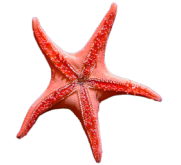Alaska SeaLife Center Responds to Two Elephant Seals May 21, 2019
Seward, Alaska (May 21, 2019) –The Alaska SeaLife Center (ASLC) responded to two juvenile northern elephant seals hauled out on the shores of Seward, Alaska. Since opening in 1998, the ASLC has responded to eleven elephant seals in the state. Although northern elephant seals are known to visit the Gulf of Alaska to feed, they rarely are found on the beaches of Alaska. These seals had flipper tags, which identified their birthing area as Kings Range and Piedras Blancas, California.
ASLC’s Wildlife Response Team did not actively monitor the first elephant seal stranding because this seal was sufficiently secluded from heavy use areas. After resting several days, the seal swam off on its own. The second elephant seal hauled out in a high traffic area near the Seward Harbor. ASLC staff relocated the seal via boat to a quiet location within Resurrection Bay. A week later, on May 14, this animal was again beached south of town at Lowell Point. Traffic signs were placed around the seal notifying the public to keep a respectful distance. Within two days, the seal swam off.
Seals haul out on Alaska beaches when it is time to molt (shed their hair). Molting is a very energetically demanding process for pinnipeds, especially for elephant seals. Elephant seals experience a catastrophic molt where they lose all their fur at once. ASLC Wildlife Response Curator, Jane Belovarac notes, “When elephant seals are in their molt, they can look sickly. They don’t just lose their hair, but they also shed the underlying segments of skin as well.” ASLC professionals are confident that while these animals appear lethargic and injured, it is due to their molt. Both elephant seals that were reported in Seward had robust and healthy body conditions, and did not require veterinary treatment.
“While it is unusual to see northern elephant seals on the beaches of Alaska, it is not outside their range of behavior,” said Wildlife Research Biologist Sharon Melin, with NOAA Fisheries’ Alaska Fisheries Science Center. “During their solitary migration, individuals haul out in small numbers all along west coast beaches. After the long migration from California to feeding areas near Alaska, the juvenile seals may have needed to haul out to rest before continuing their migration or foraging activities.”
The northern elephant seal is the largest of the “true” seal in the Northern Hemisphere. Adult males use their large inflatable noses during the winter breeding season to resonate sound when vocally threatening each other. The largest colonies of northern elephant seals are found off southern California in the Channel Islands. They have one of the longest migrations of any mammal; some have been recorded traveling over 13,000 miles roundtrip.
ASLC operates a 24-hour stranding hotline where trained professionals will walk people through the proper steps to assist the animal. Call 1-888-774-SEAL if you see a marine mammal in distress.NOAA Fisheries statewide Alaska Marine Mammal Stranding Hotline number is 877-925-7773.
About the ASLC: Opened in 1998, the Alaska SeaLife Center operates as a private, non-profit research institution and a public aquarium. It generates and shares scientific knowledge to promote understanding and stewardship of Alaska’s marine ecosystems. The ASLC is an accredited member of the Association of Zoos and Aquariums. To learn more, visit www.alaskasealife.org.
About NOAA: NOAA’s mission is to understand and predict changes in the Earth’s environment, from the depths of the ocean to the surface of the sun, and to conserve and manage our coastal and marine resources. Join us on Twitter, Facebook, Instagram, and our other social media channels. To learn more, visit www.alaskafisheries.noaa.gov.


